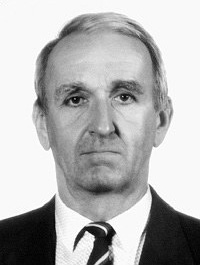Dr. Jenkovszky László

Dr. Jenkovszky László, Kiev Institute of Theoretical Physics:
Memoir of Bolyai, Gauss and Lobacsevskij
Predecessors: Nearly 2300 years ago, the Greek mathematician Euclid of Alexandria laid down the basis of the geometry now known from the textbooks and used in everyday life. It was based on a number of postulates and axioms. Almost all of them were generally accepted either as obvious, or as necessary for logical consistency. A notable exception was the fifth postulate: if a straight line crosses two other straight lines, forming internal angles that equate to less than 2π radians, then these two lines—if continued infinitely — must cross somewhere on the plane where the lines and angles are located.
The fifth postulate has been something of an embarrassment ever since Euclidean geometry was first formulated. However, it became a dogma — part of European culture, supported by authorities such as Isaac Newton, Leonardo da Vinci, Galileo Galilei, Johann Kepler, Joseph-Louis (Giuseppe Luigi) Lagrange and Emmanuel Kant, among others.
It was only in the first half of the 19th century that three great men—Janos Bolyai, Carl Friedrich Gauss and Nikolai Lobachevsky, abbreviated in alphabetical order as BGL throughout the rest of this article—independently, but almost simultaneously, succeeded in generalising Euclid’s vision.
The presentation explores this journey also mentioning other notable scientist who came very close to reaching similar conclusions as BGL did: an Italian monk named Girolamo Saccheri around 1697 and Ferdinand Karl Schweikart between 1807 and 1816.
